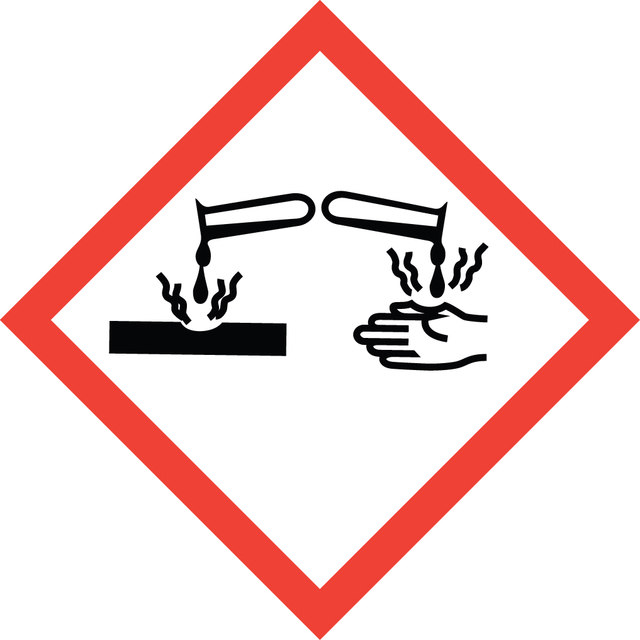- Compare Page




Description
Properties
reag. USP
Usage and Safety
- Research on the Synthesis of Zinc-Ammonium Phosphate Using Galvanic Waste Sludge as a Source of Zinc.: This study explores the synthesis of zinc-ammonium phosphate from galvanic waste sludge. Hydrochloric acid solution is utilized in the extraction process, demonstrating its effectiveness in recovering valuable metals from industrial waste (Morgovan et al., 2024).
- Corrosion inhibition of mild steel in hydrochloric acid solution by the expired Ampicillin drug.: This research investigates the use of expired Ampicillin as a corrosion inhibitor for mild steel in hydrochloric acid solutions. The study highlights a novel application for expired pharmaceuticals in mitigating corrosion in acidic environments (Alamry et al., 2023).
- Contactless conductivity sensor employing moist paper as absorbent for in-situ detection of generated carbon dioxide gas.: This paper discusses a contactless conductivity sensor for detecting CO2 gas, utilizing hydrochloric acid solutions to generate the gas for calibration and testing. The method offers a simple and efficient approach for environmental monitoring (Sonsa-Ard et al., 2020).
- The microwave induced plasma with optical emission spectrometry (MIP-OES) in 23 elements determination in geological samples.: This article details the application of microwave-induced plasma optical emission spectrometry for elemental analysis in geological samples. Hydrochloric acid solution is used in the sample preparation process to ensure accurate and efficient element extraction (Niedzielski et al., 2015).
- Possibilities and Limitations of ICP-Spectrometric Determination of the Total Content of Tin, Its Inorganic and Organic Speciations in Waters with Different Salinity Levels-Part 1: Determination of the Total Tin Content.: This study uses hydrochloric acid solution in the preparation of water samples for ICP-spectrometric analysis to determine total tin content, showcasing its versatility in environmental chemistry (Temerdashev et al., 2023).
- Spectrofluorometric determination of orphenadrine, dimenhydrinate, and cinnarizine using direct and synchronous techniques with greenness assessment.: The research highlights the application of hydrochloric acid solution in spectrofluorometric techniques for the determination of pharmaceutical compounds, emphasizing environmentally friendly analytical methods (Ghonim et al., 2023).
- Phosphoryl Trichloride-Method of Determination in Workplace Air.: This paper discusses the use of hydrochloric acid solution in air sampling and analytical methods to determine the presence of phosphoryl trichloride in workplace environments, ensuring occupational safety (Kowalska and Wasilewski, 2023).
- Synthesis of controlled-size starch nanoparticles and superparamagnetic starch nanocomposites by microemulsion method.: This research employs hydrochloric acid solution in the synthesis of starch nanoparticles and nanocomposites, demonstrating its role in advanced material science applications (Morán et al., 2023).
- Research on the Synthesis of Zinc-Ammonium Phosphate Using Galvanic Waste Sludge as a Source of Zinc: This study explores a novel approach using hydrochloric acid solution in the synthesis process aimed at valorizing waste materials. The article demonstrates a chemical strategy that enhances resource recovery, significantly contributing to waste minimization in industrial practices (Morgovan et al., 2024).
- Contactless conductivity sensor employing moist paper as absorbent for in-situ detection of generated carbon dioxide gas: The study integrates hydrochloric acid solutions in the development of a novel, cost-effective contactless conductivity sensor. This sensor uses a simple paper-based system for the in-situ monitoring of gases, providing a significant tool in environmental monitoring and analysis (Nacapricha et al., 2020).
Warning
Met. Corr. 1
8B - Non-combustible corrosive hazardous materials
WGK 1
Warning
Met. Corr. 1
8B - Non-combustible corrosive hazardous materials
nwg
Not applicable
Not applicable
Warning
Met. Corr. 1
8B - Non-combustible, corrosive hazardous materials
WGK 1
Not applicable
Not applicable
Warning
Met. Corr. 1
8B - Non-combustible, corrosive hazardous materials
nwg
